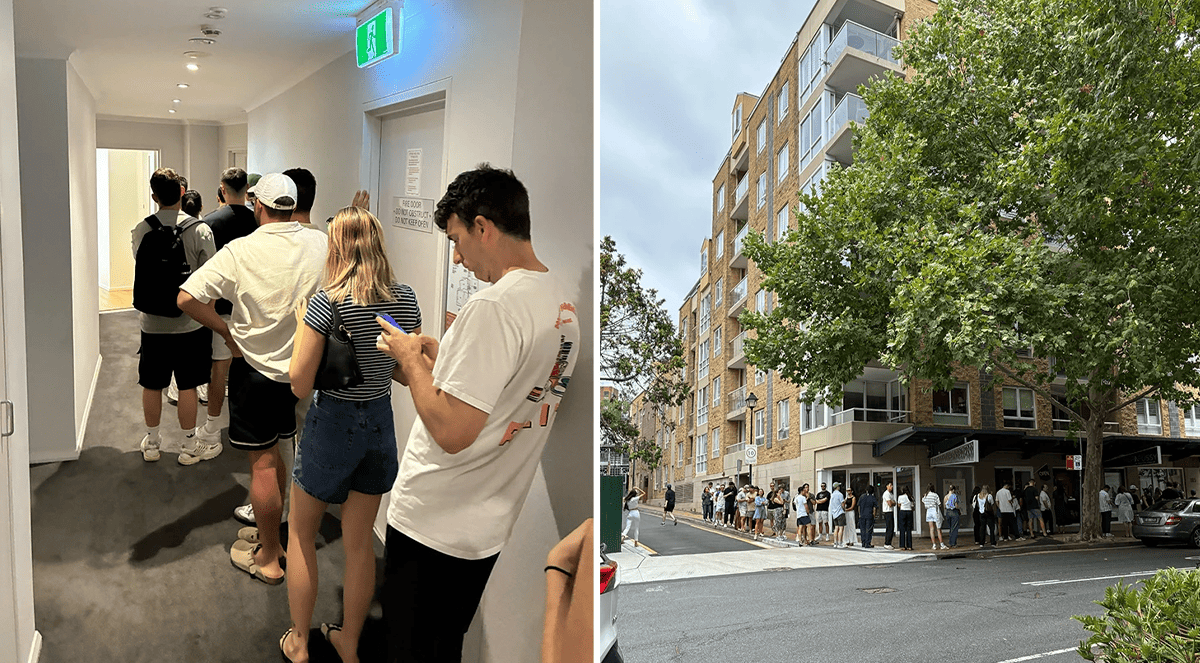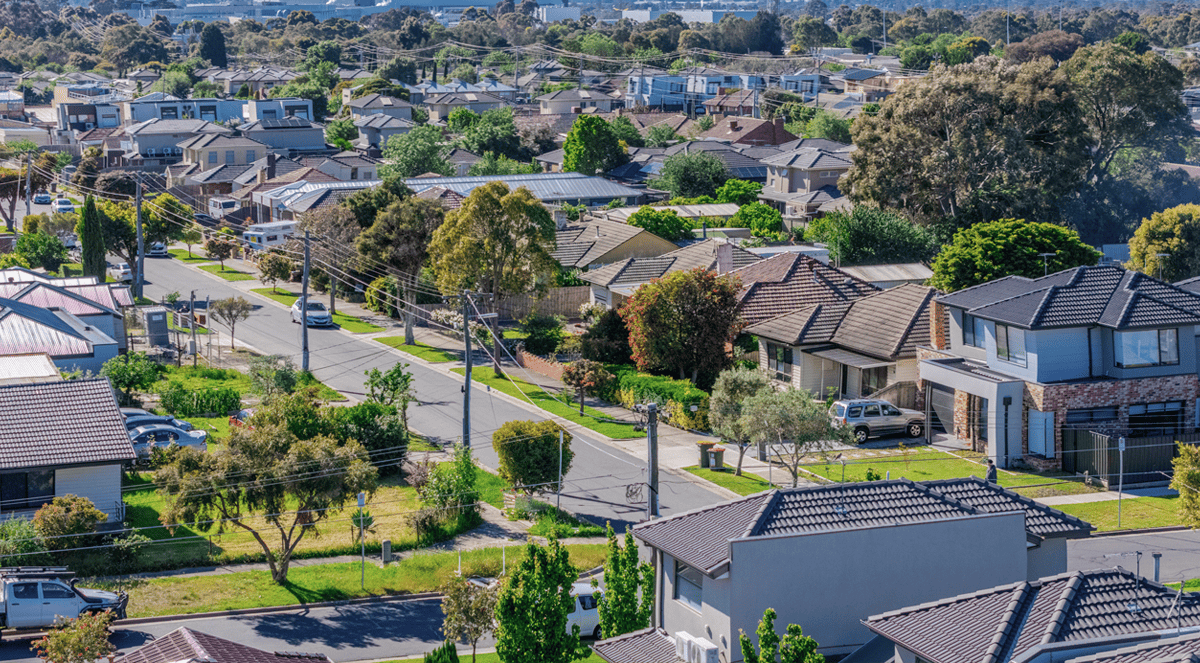Features > Property Education > Investment Tips
10 key considerations to make when buying an investment property
.jpg)
KEY POINTS
- Before embarking on your property investment journey, it’s important to decide what your main objective for investing is
- Data is key to making an informed decision
- Planned infrastructure upgrades can indicate a potential increase in future demand
Property investment can be an exciting endeavour and a profitable investment strategy, but there are many considerations to make.
A range of factors will decide if a particular property will generate wealth, or if it will deplete your savings and leave you in inefficient debt.
Before diving headfirst into buying an investment property, it’s imperative to get clear on your objectives.
An investment property is a property bought to generate wealth, through rental returns and capital growth. But firstly, deciding whether you would benefit from increased cash flow or a higher appreciation rate (capital growth) will help you focus on the right things.
Focusing on capital growth might mean paying less attention to factors like rental yields, while on the other hand, if cash flow is your greatest priority, buying property in a higher-yielding suburb would likely trump the importance of historical appreciation rates. It is possible, however, to achieve a healthy balance of capital growth and rental yield.
Out of the myriad of things to consider, these are the ten factors we believe are most important when buying an investment property.
- Location
When forecasting the success of an investment property, location is arguably the greatest indicator. Location determines the infrastructure and facilities available within proximity of the property, it determines employment prospects, and in turn, desirability.
Assessing the average time-on-market of properties in the area is a good indicator of the desirability of a suburb. A shorter time on the market might indicate that homeowners have little trouble selling their homes, as demand is high and the suburb is sought-after.
- Population growth and housing supply
It’s the law of supply and demand - when demand is high and supply is constricted, prices are pushed up. Similar to what we’ve seen in capital cities, population growth paired with limited available homes can be a recipe for immense capital growth.
Predicting future areas of population growth can be difficult, but existing data combined with future pipelines of infrastructure could be a good indication.
- Market trends
Data is king and is so important to use when making any kind of financial decision. Property is no exception. Assessing the market trends by looking at historical data can shed light on property appreciation rates, economic indicators in the local market, and supply and demand dynamics. It can also paint a picture of how prices in a particular suburb responded during times of crisis or economic pressures.
To ensure you approach a property purchase well-informed, market trends are crucial to consider.
- Rental yield
Consider the potential rental income relative to the property's purchase price. Calculate the rental yield (annual rental income divided by property price) to assess the investment's profitability.
According to Canstar, a healthy rental yield is 3 percent, as it’s said to indicate a well-balanced market between renters and homeowners.
Rental yield is a contested subject, as some believe that you cannot achieve healthy capital growth in a property with a high rental yield, as it can indicate that the property is undervalued.
As mentioned above, it’s important to first decide what’s most important to you - positive cash flow or high capital growth. With that said, achieving a healthy balance of both is entirely possible.
- Property condition
Evaluate the condition of the property, including its age, structural integrity, and any necessary repairs or renovations. It’s important to factor in any maintenance costs when determining the overall profitability of the investment, for now, and into the future.
Purchasing a pest and building report will allow you to make an informed decision, but be sure to ask questions about replacement and remedy costs for any existing faults, as this might influence your decision.
- Price
This sounds like a no-brainer, however, paying special attention to price could draw out some concealed truths about the property. Price plays a fundamental role in investment property decisions, influencing affordability, ROI, cash flow, risk, financing options, market competitiveness, and appreciation potential.
An undervalued property could have hidden flaws, so be sure to dig a bit deeper if a property is substantially cheaper than other similar homes in the area.
- Growth potential
This is especially important if capital growth is at the crux of your investment strategy. Assessing the historical appreciation rate of the property and surrounding area is a good starting point, but as with any investment, past performance is not an indicator of future performance.
It’s important to consider any future events that might have an impact, like the construction of new transport infrastructure, a new hospital, or schooling options.
- Tax implications
Increased income equals increased tax requirements, so it's important to factor this in before starting on your investment journey. For people already earning a higher income, any increase might knock them into a higher tax bracket, meaning even more money goes to the tax man. This is where the appeal of negative gearing comes in.
It allows property investors to generate wealth with capital growth but reduces tax responsibilities by utilising borrowed money to buy a property, where the mortgage repayments cost more than the rent generated by the property itself. This results in a ‘loss’ that can be offset against existing income at tax time.
Concessional capital gains tax also applies to eligible properties held for over 12 months, reducing the tax an investor pays by 50 per cent.
- Vacancy rates
Analyse historical vacancy rates in the area to assess the property's potential for consistent rental income. Low vacancy rates indicate strong demand for rental properties, while high vacancy rates may signal oversupply or other issues.
- Auction clearance rates
Auction clearance rates serve as a valuable indicator of the health and performance of the property market in a specific area, offering insights into market sentiment, supply and demand dynamics, price trends, market activity, competitive conditions, timing, and local factors.
Reviewing the auction clearance rates in any particular suburb will paint a picture of the desirability of the suburb, and the performance of houses in that area.
Keeping these key considerations in mind will help you to make an informed choice when purchasing an investment property, but it's important to note that everyone’s financial situation is different.
Risk tolerance, income, existing investment portfolio, and financial goals will play a large role in determining the ideal course of action for you, so it's important to get tailored expert advice.
Stay Up to Date
with the Latest Australian Property News, Insights & Education.




.png?width=292&height=292&name=Copy%20Link%20(1).png)
 SIGN UP FOR FREE NEWSLETTER
SIGN UP FOR FREE NEWSLETTER





.jpg?width=1920&height=1080&name=Warning%2c%20You%20Might%20Be%20Facing%20Higher%20Taxes%20Soon%20(1).jpg)





.png?width=1920&height=1080&name=Rate%20Drops%20Signal%20BIGGEST%20Property%20Boom%20in%20DECADES%20(1).png)

.jpg?width=1920&height=1080&name=Labor%20vs%20Liberal%20These%20Housing%20Policies%20Could%20Change%20the%20Property%20Market%20Forever%20(1).jpg)
.jpg?width=1920&height=1080&name=QLD%20Slashes%20Stamp%20Duty%20Big%20News%20for%20Investors%20%26%20Home%20Buyers%20(1).jpg)
.jpg?width=1920&height=1080&name=Trump%20Just%20Slapped%20Tariffs%20%E2%80%93%20Here%E2%80%99s%20What%20It%20Means%20for%20Australia%20(1).jpg)
.jpg?width=1920&height=1080&name=Federal%20Budget%202025%20More%20Debt%2c%20No%20Housing%20%E2%80%93%20Here%E2%80%99s%20What%20You%20Need%20to%20Know%20(1).jpg)
.jpg?width=1920&height=1080&name=Australias%20Housing%20Crisis%20is%20about%20to%20get%20MUCH%20Worse%20(New%20Data%20Warns).jpg)
%20(1).jpg?width=1920&height=1080&name=Australias%20RENTAL%20CRISIS%20Hits%20ROCK%20BOTTOM!%20(2025%20Update)%20(1).jpg)
%20(1).png?width=1920&height=1080&name=Is%20Adelaide%20Still%20a%20Good%20Property%20Investment%20(2025%20UPDATE)%20(1).png)
.jpg?width=1920&height=1080&name=RBA%20Shocks%20with%20Rate%20Cuts!%20What%E2%80%99s%20Next%20for%20Property%20Investors%20(1).jpg)
%20(1).jpg?width=1920&height=1080&name=I%20Predict%20The%20Feb%20Rate%20Cut%20(My%20Price%20Growth%20Prediction)%20(1).jpg)
.png?width=1920&height=1080&name=Why%20Property%20Prices%20Will%20Rise%20in%202025%20Market%20Predictions%20(1).png)
.jpg?width=1920&height=1080&name=Why%20Investors%20Are%20Choosing%20Apartments%20Over%20Houses%202%20(1).jpg)
.jpg?width=1920&height=1080&name=Why%20Rate%20Cuts%20Will%20Trigger%20A%20Property%20Boom%20(1).jpg)
.jpg?width=1920&height=1080&name=Retire%20On%202Million%20With%20One%20Property%20(Using%20SMSF).jpg)
.jpg?width=1920&height=1080&name=4%20Reasons%20Why%20You%20Should%20Invest%20in%20Melbourne%20Now%20(1).jpg)
%20(1).jpg?width=1920&height=1080&name=Old%20Property%20vs%20New%20Property%20(Facts%20and%20Figures%20Revealed)%20(1).jpg)
%20(1).jpg?width=1920&height=1080&name=Will%20The%20New%20QLD%20Govt%20Create%20a%20Property%20Boom%20or%20Bust%20(My%20Prediction)%20(1).jpg)
%20Scott%20Kuru%20(1).jpg?width=1920&height=1080&name=Inflation%20Hits%20Three-Year%20Low%20(Will%20RBA%20Cut%20Rates%20Soon)%20Scott%20Kuru%20(1).jpg)
.jpg?width=1920&height=1080&name=How%20to%20Buy%20Investment%20Property%20Through%20SMSF_%20The%20Ultimate%20Guide%20(1).jpg)
.jpg?width=1920&height=1080&name=Victoria%20Slashes%20Stamp%20Duty%20Melbourne%20Set%20to%20Boom%20Scott%20Kuru%20(1).jpg)
.png?width=1571&height=861&name=Are%20Foreign%20Buyers%20Really%20Driving%20Up%20Australian%20Property%20Prices%20(1).png)
.jpg?width=1920&height=1080&name=The%20Single%20Factor%20That%20Predicts%20Property%20Growth%20Regions%20(1).jpg)
%20Scott%20Kuru%20(1).jpg?width=1920&height=1080&name=My%20Prediction%20On%20Rates%20%26%20Negative%20Gearing%20(Market%20Crash)%20Scott%20Kuru%20(1).jpg)

-1.png?width=1920&height=1080&name=Major%20Banks%20Cut%20Rates%20Will%20RBA%20Follow%20Suit%20(Sept%20Rate%20Update)-1.png)
%20Scott%20Kuru-1.png?width=1920&height=1080&name=Rate%20Cut%20Coming%20What%20New%20Zealands%20Move%20Means%20for%20Australia%20(Sept%20Prediction)%20Scott%20Kuru-1.png)
%20(1).jpg?width=1920&height=1080&name=Buy%20when%20the%20interest%20rates%20are%20high!%20(Why%20you%20must%20buy%20now!)%20(1).jpg)
.jpg?width=1920&height=1080&name=Carms_Revised%20Taxes%20Due%20Aug%209%20YT%20Thumbnail02%20(1).jpg)
.jpg?width=1920&height=1080&name=Carms_Too%20Little%20Too%20Late%20Aug%207%20YT%20Thumbnail01%20(1).jpg)









.jpg?width=1920&height=1080&name=Carms_Rate%20Drop%20In%20July%20Jun%2010%20YT%20Thumbnail02%20(1).jpg)
.jpg?width=1920&height=1080&name=Carms_Own%20a%20Property%20V6%20Jun%205_YT%20Thumbnail%20(1).jpg)









.png?width=1920&height=1080&name=Artboard%201%20(3).png)






.jpg?width=1920&height=1080&name=YT%20thumbnail%20%20(1).jpg)

